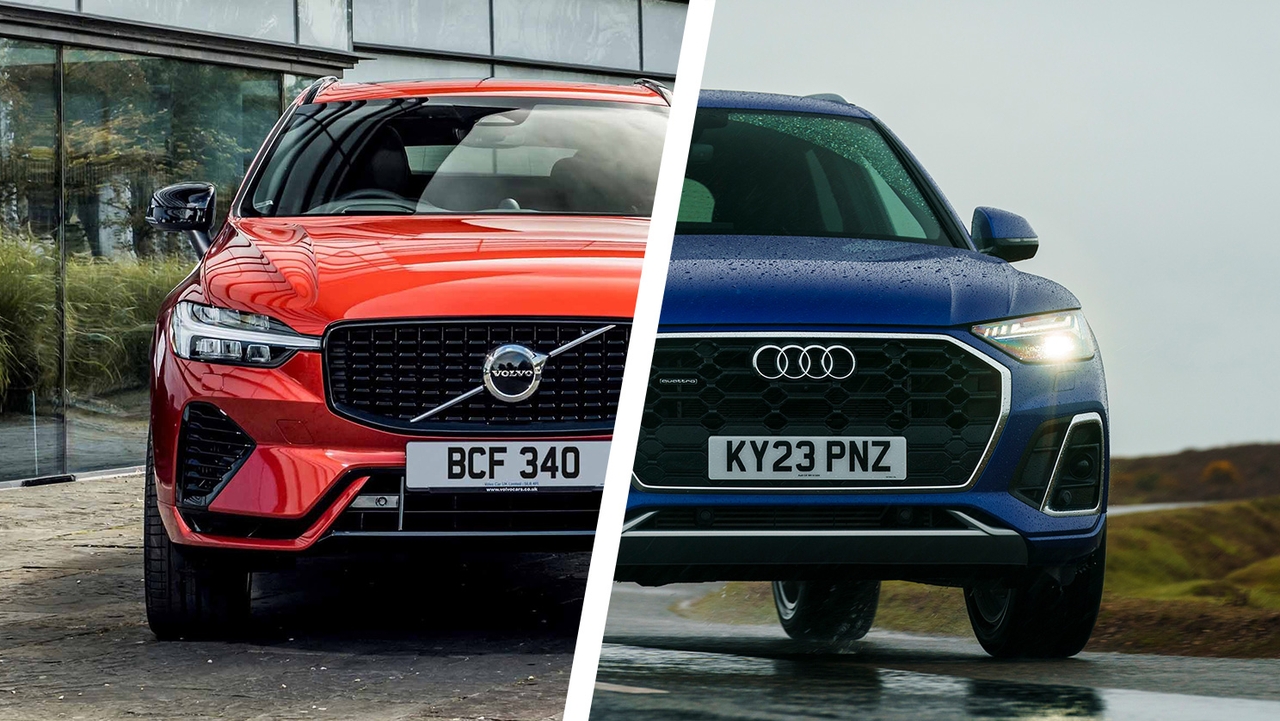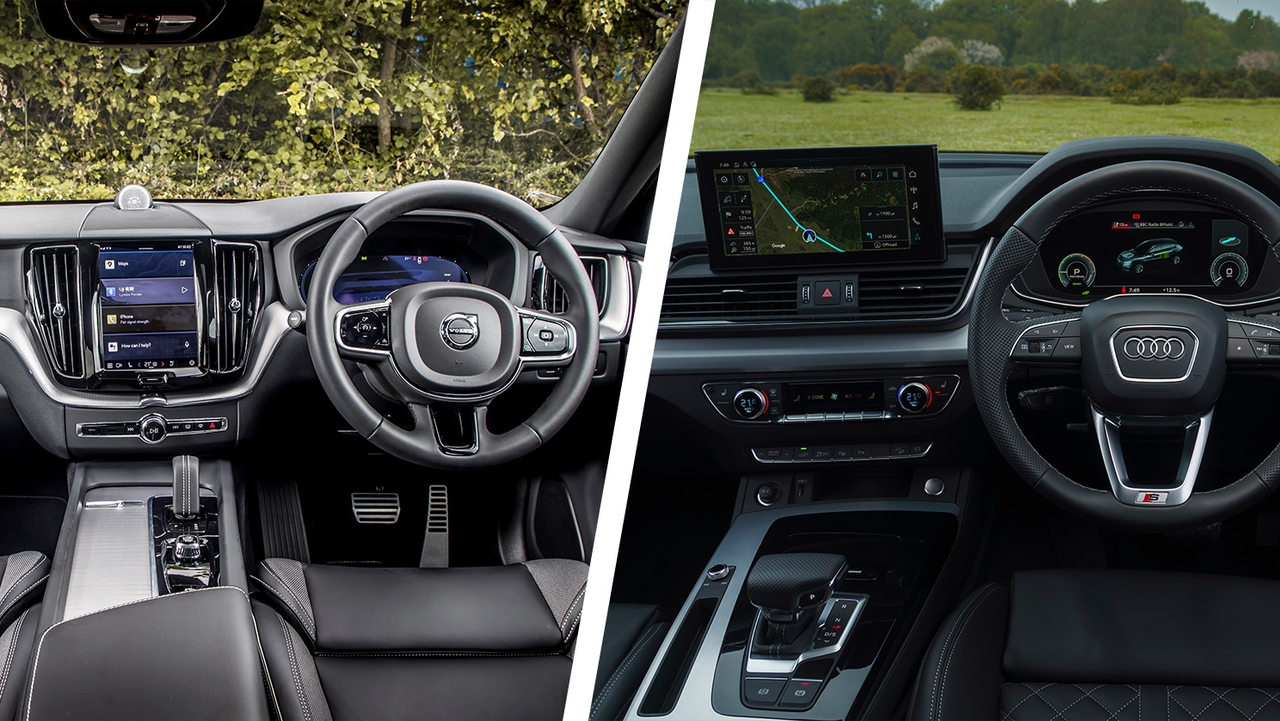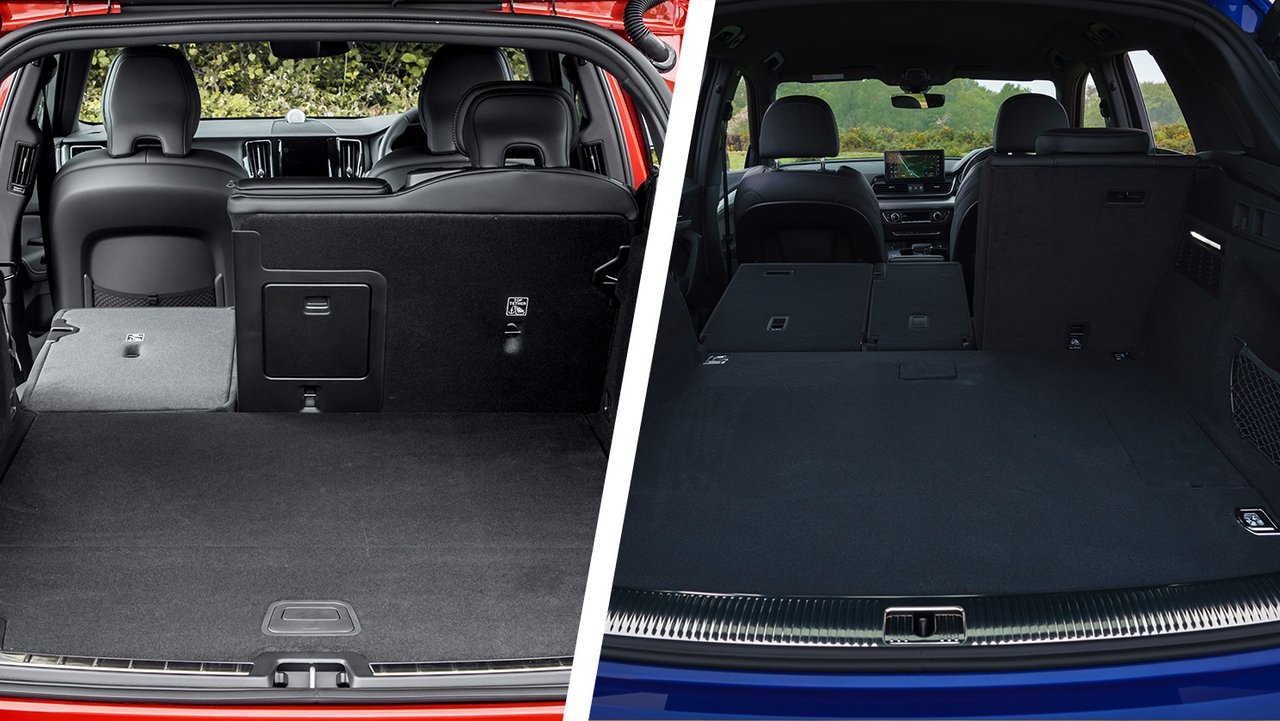We compare two premium family SUVs that both have a lot to offer, and find out whether you should buy the Audi Q5 or the Volvo XC60
Furniture store meatballs or frankfurters? When it comes to food, Germany has Sweden soundly beaten. Sorry, meatball fans. But, in the world of premium SUVs, Germany’s Audi and Sweden’s Volvo are much more closely matched.
The Volvo XC60 and Audi Q5 both have dozens of plus points, so it can be hard to pick between them. Presumably, you can’t buy both, so this guide will tell you which of the two you should pick.
Volvo XC60 vs Audi Q5 compared
| Volvo XC60 | Audi Q5 |
Pros:
| Pros:
|
Cons:
| Cons:
|
Styling and design

Neither of these cars pushes the envelope when it comes to styling. Both the XC60 and Q5 transplant their respective brands’ design cues onto a family SUV. For the Q5, that means a wide ‘singleframe’ grille with either chrome or black strakes, muscular haunches and slim LED lights all round. The XC60 showcases Volvo’s ‘Thor’s hammer’ headlights, with the LED daytime running light running across the middle of the light cluster and to the fairly square grille.
There’s really not much between them – you might slightly prefer one over the other but you’re unlikely to have strong feelings about either. The Audi is perhaps a touch more purposeful-looking, but the Volvo looks a little more restrained and modern to our eyes.
If you want a sleeker look from your family SUV, the Audi Q5 Sportback should be in your sights. It introduces a sloping roofline that doesn’t impact practicality too much.
Interior

Just like the styling, the XC60’s and the Q5’s interiors do nothing to rock the boat, so there won’t be many surprises if you’re trading up from another Volvo or Audi. No complaints either – these two cars offer among the best interior quality and material feel of any midsize SUV.
The unusual portrait touchscreen is the centre point of any modern Volvo interior, and it’s pretty easy to use with the main functions arranged in a big stack. That’s good, because you’ll need to use it for everything including climate control. In the Audi, the screen is perched on top of the dashboard – it looks like it retracts but doesn’t – and there’s a proper bank of climate buttons.
Newer XC60s feature an Android-based operating system, which means you get built-in Google Maps without having to connect your phone – and always up-to-date mapping with live traffic updates. Both cars do well for tech, as you’d expect, and both cars get a glossy digital instrument cluster as standard.
Dimensions and practicality
| Volvo XC60 dimensions | Audi Q5 dimensions | |
| Boot space (seats up/down) | 483/1,410 litres | 550/1,520 litres |
| Length | 4,708mm | 4,682mm |
| Width (inc mirrors) | 2,117mm | 2,140mm |
| Height | 1,660mm | 1,662mm |
These two are pretty well matched on paper, taking up almost exactly the same amount of room on the road. They’re both really spacious inside, although the Q5 feels marginally more spacious for rear-seat occupants. It’s a similar story in the boot, where the Q5 makes better use of its available space to give a bigger luggage capacity. The XC60’s boot floor also slopes downwards very slightly, which could cause luggage to move around.
Really, though, both offer plenty of space for the vast majority of family outings so, if you prefer the Volvo’s styling and interior feel, the slightly smaller boot shouldn’t be a dealbreaker.
Engines and performance

Automatic gearboxes and four-wheel drive are the order of the day for the XC60 and Q5. While the Volvo used to be offered with a manual gearbox, the auto suits its relaxed nature much better. And its now-standard-fit four-wheel-drive system means it has the all-weather grip to back up its solid, safe feel.
The Volvo is a relaxed cruiser. There aren’t any driving modes to fiddle with and a driving experience that isn’t at all sporty. Again, good, because chasing sportiness can ruin a car’s composure and ride comfort. The Audi does try to be sporty, with firmer handling and slightly more alert steering – but it’s no sports car and most customers won’t try to drive it like one, which is why the Volvo’s approach makes perfect sense.
Both Audi and Volvo have slimmed down the engine range in recent years, and now buyers have a simple choice – one petrol, one diesel and one hybrid. Both Volvo’s B5P petrol engine and Audi’s 45 TFSI petrol boast mild-hybrid tech to reduce emissions and allow these heavy SUVs to return 35mpg or so, and both get from 0-62mph in under seven seconds.
Likewise, the B4D and 40 TDI diesels have around 200hp and are only half a second different in accelerating – the Audi takes 7.6 seconds compared to 8.3 for the Volvo, which you’d expect for the sportier SUV. Both can manage 44mpg on a long journey.
Volvo XC60 Recharge vs Audi Q5 hybrid

Another area of similarity is the option of a plug-in hybrid powertrain. New examples will be of particular interest to company-car drivers, as both the Volvo XC60 Recharge and Audi Q5 40 TFSI e offer much lower Benefit-in-Kind (BiK) tax than conventional petrol and diesel engines. If that’s you, the Volvo’s 22g/km CO2 output means it’s in a lower tax band than the Audi.
Meanwhile, private used-car buyers can enjoy potentially much lower running costs than the petrol or diesel engines. The XC60 can manage almost 50 miles on a full battery, while the Audi will do almost 40 miles, and both can cover off an average commute without using a drop of petrol. If you mainly do short journeys and can recharge the battery often, these cars could save you hundreds of pounds a year in fuel.
Value and reliability

With so many areas of common ground between these two cars, it’s not all that surprising that an XC60 will cost roughly the same as an equivalent Q5 on the used market. Both tend to have great residual values as they’re in-demand premium SUVs, which keeps PCP finance prices from being sky-high.
In reliability surveys, Volvo tends to perform slightly better than Audi. In both these cars, the engines are tried and tested, so shouldn’t prove unreliable. The sheer amount of technology on board means that electrical glitches could potentially pop up if you’re unlucky. Typically, though, a software flash should fix any issues.
Which is best?
You’re unlikely to feel like you picked the wrong choice in either of these cars. Both are at the top of the class. If it were our money, we’d lean towards the XC60 – it’s a little more relaxing and feels just a tiny bit more modern – but you should strive to test-drive both before you make your decision.
Find your nearest Motorpoint store here, or read our in-depth review of the Volvo XC60.


































